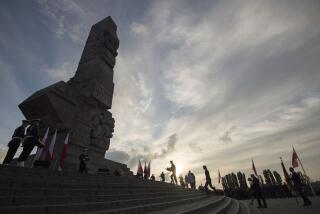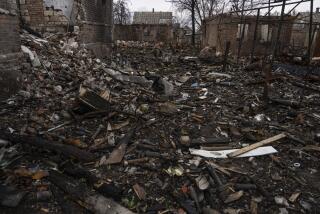‘To Live in Truth’ : * After 50 Years, Soviets Admit the Horror of Katyn Forest
- Share via
Thomas Aquinas held that memory ought to be a branch of ethics. History is a people’s memory of themselves, and without it they are left to wander soulless in a moral wasteland. That is why Czechoslovak President Vaclav Havel has described the most critical aspect of the popular revolution now under way in Eastern Europe as a struggle “to live in truth.”
A milestone in the course of that struggle was reached Friday, when the Soviets officially acknowledged, for the first time, that in the spring of 1940, Josef Stalin’s secret police murdered more than 15,000 captured Polish officers in their custody. The bodies of 4,250 of them were found in mass graves in the Katyn Forest near the western Russian city of Smolensk. Each had been shot in the back of the head; their corpses were stacked in layers. The remains of the estimated 11,000 Polish internees killed in the camps in Starobielsk and Ostashkow never have been found. Soviet apologists have insisted ever since that the Poles were killed by invading Nazi troops.
Friday, however, Tass released a statement announcing that Soviet and Polish historians had turned up conclusive evidence that the massacres were carried out by Stalin’s NKVD. “The discovered archival material,” Tass said, “puts direct responsibility for the atrocities in the Katyn Forest on (secret police Chief Lavrenti) Beria, (V. N.) Merkulov and their henchmen. The Soviet side, expressing profound regret over the Katyn tragedy, declares that this tragedy is one of the gravest crimes of Stalinism.”
Poles have long regarded Katyn as a national and not simply human disaster. The 15,000 murdered officers represented the cream of the Polish intelligentsia, called up from the reserves in 1939. Stalin thought the elimination of such “class enemies” would destroy the Poles’ national spirit and will to resist. Such is the calculus of tyranny, and the Soviets’ willingness to speak honestly of it now, even as they confront wrenching nationalist turmoil within their own borders, says much about the changes Mikhail S. Gorbachev has brought to the Kremlin.
Fifty years ago, in those first dark months of 1940, when barbarism appeared everywhere triumphant, spring must have seemed a mockery. Today, the season of promise and the lives of nations are once again conjoined, as the green shoots of hope and truth push their way to the light, even in the dark soil of Katyn.
More to Read
Sign up for Essential California
The most important California stories and recommendations in your inbox every morning.
You may occasionally receive promotional content from the Los Angeles Times.













